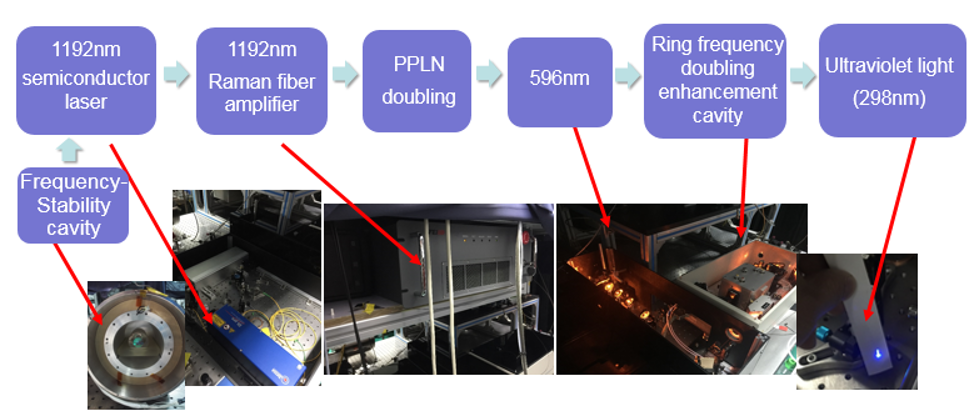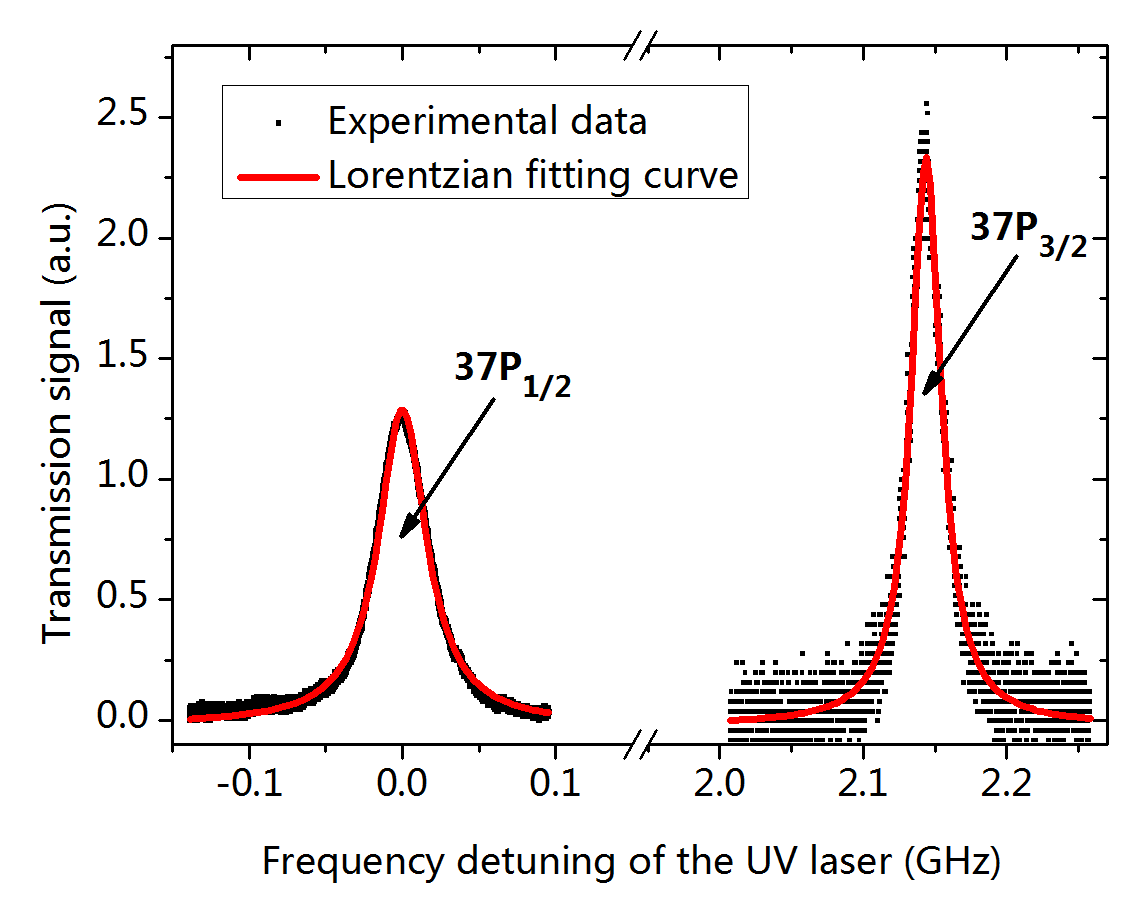Rydberg atoms is a good candidate for quantum computation and nonlinear quantum optics owing to their long lifetime and the long range of the Rydberg interaction. Recently, using a continuous-wave (cw) laser, single-photon excitation to the nP Rydberg states have been an emerging method to study the Rydberg atoms. However, spectral measurements of the nP states, with both a wide range and a high accuracy, had yet to be investigated. High-power ultraviolet (UV) laser can provide a feasible way but has difficulty in the obtaining.
Recently, a research group from Shanghai Institute of Optics and Fine Mechanics, Chinese Academy of Sciences (CAS), acquired a high-power and wavelength tunable UV laser through two frequency doubling stage and measured the Rydberg spectrum of Rubidium atoms with it. Their findings were published on Physical Review A.
In the experiment, they excited the rubidium atoms in a room-temperature cell to nP1/2 (n = 34 - 52) and nP3/2 (n = 34 - 90) Rydberg states directly. The absorption signal of the UV laser was detected using a quantum shelving scheme which could eliminate the Doppler-broadening and amplify the signal. After carefully eliminating the factors, which could cause a frequency shift or line broadening, the spectroscopic information was been extracted.
The simple excitation and detecting scheme make it possible to obtain the spectroscopic information in a large range and with high precision. The fine-splitting intervals (n = 34–52), the average oscillator-strength ratio (5.52 ± 1.0), the ionization frequency from the ground state 5S1/2, F = 1 (1010.0291685(55) THz), and the quantum defects for nP1/2 (δ0 = 2.654746(45)) and nP3/2 (δ0 = 2.641657(20)) were determined.
The spectrum could be used as a frequency lock-in signal and the spectroscopic information could provide basic knowledge for further applications with Rydberg atoms.
The research was supported by the National Key Research and Development Program of China, the National Natural Science Foundation of China and the Key Research Program of Frontier Science of the Chinese Academy of Sciences.

Fig. 1. The generation of the ultraviolet light

Fig. 2. Single-photon excitation spectra of the Rydberg transitions
Article website:
https://journals.aps.org/pra/abstract/10.1103/PhysRevA.99.042502
Contact:
Mr. Cao Yong
General Administrative Office
Shanghai Institute of Optics and Fine Mechanics, CAS
Email: caoyong@siom.ac.cn